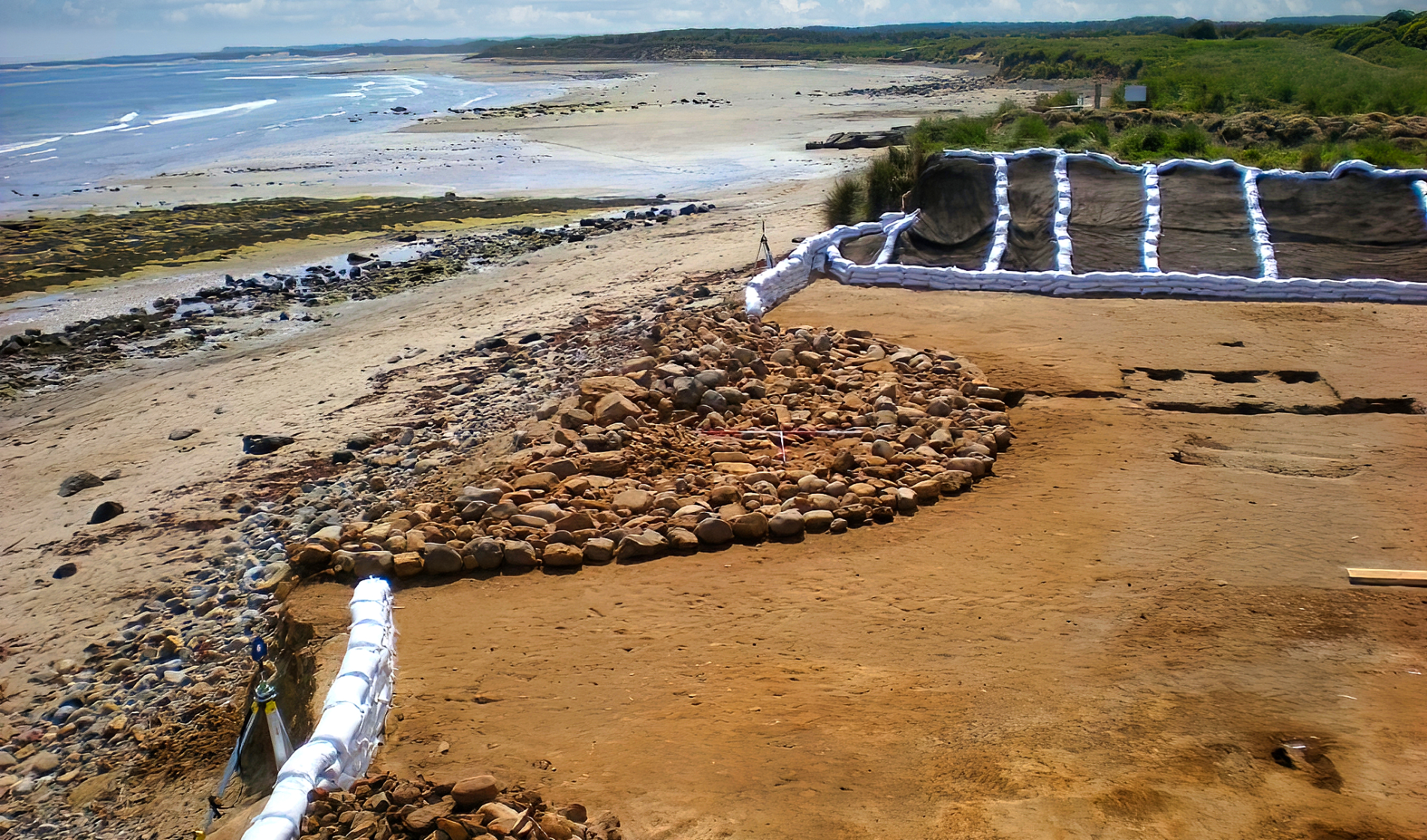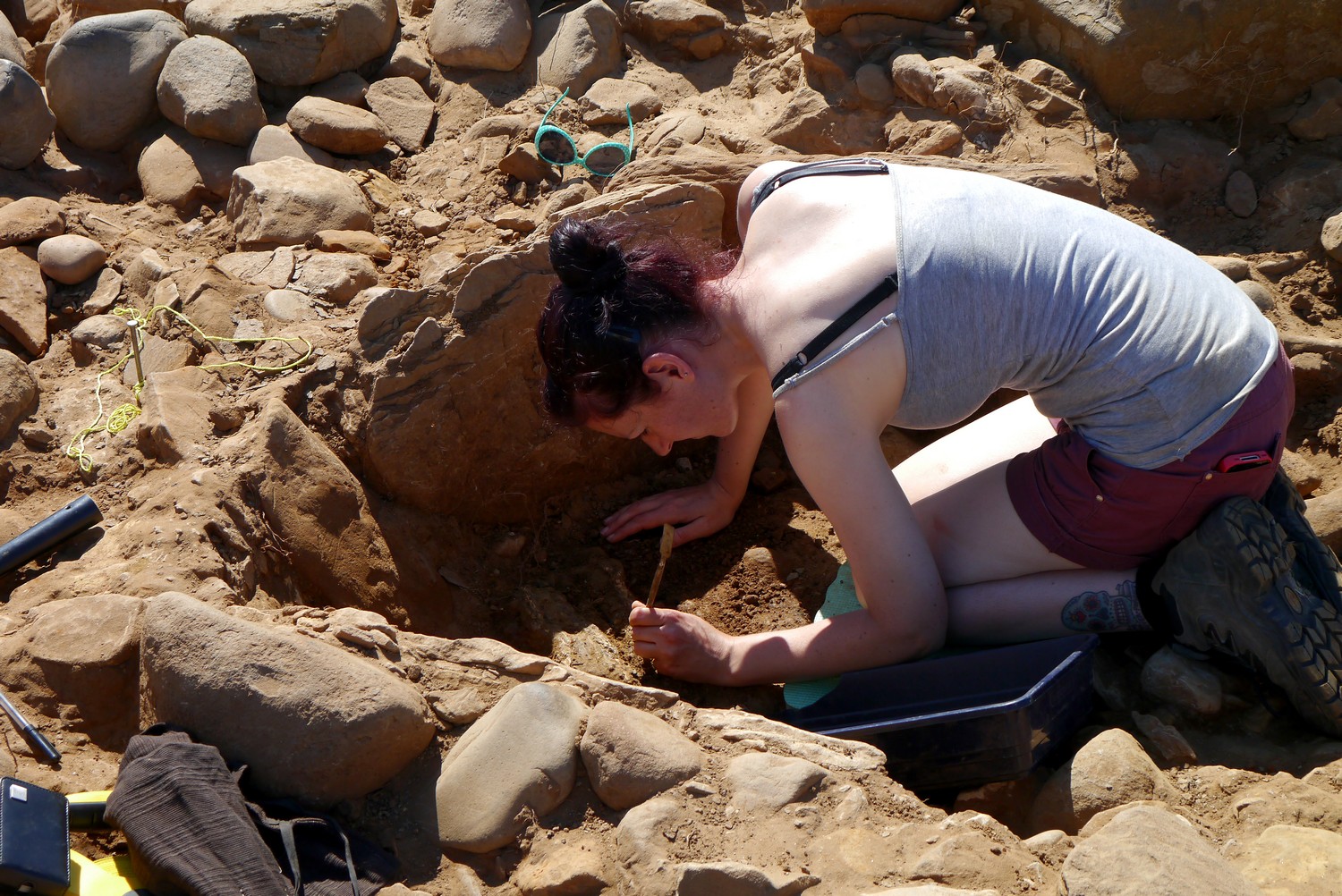The Bronze Age Cairn
The burial cairn at Hauxley was onre of the main targets for the Rescued from the Sea project. Evidence for the cairn had been steadily eroding from the dunes for a number of years and the cairn itself was in danger of being lost competely. The cairn occupied the far eastern part of the excavations. So far east that, in fact, the sandy cliff competely cut the remains in half. The only evidence for the remainder of the cairn could be seen as a mess of boulders lying on the beach below.

The cairn is especially interesting in that it repersents a Beaker Period burial site. At the very start of the Bronze Age (around 2500 BC) the introduction of copper coincides with the appearance of distinctive, patterned pottery drinking vessels known as Beakers. The people introducing the copper and the vessels have become known as the Beaker People. We have some fine examples of these vessels as they were important enough to have been carefully placed in the tombs of the dead.
The Cairn Revealed
After a good deal of careful excavation, the size and shape of the cairn emerged. The outer edge of the cairn was marked by a neat kerb of stones and measured 17m in diameter. Even today the mound of stones stood a good 1.5m above the original ground surface. As the excavations progressed a second kerb appeared suggesting the cairn had been enlarged at some point. In all eight burials, a mixture of cremations and inhumations were found in the cairn and one, found in the later extension to the cairn, contained human bones and some sherds of pottery. This, however, was not from a beaker. The sherds were from a food vessel. Pottery of this type is associated with burials in the Early Bronze Age, somewhat later than the beaker burials suggesting the cairn had been a place of some importance for generations.

The photograph above shows the excavation of a burial cist on site. The sandstone slabs forming the cist can be seen and human remains, two long bones (probably femurs) can be seen inside.
Three construction phases were identified and radiocarbon dates obtained from the excavations gave dates between 2400 to 1800BC. The Bronze Age cemetery could have been in use for over 500 years and it seems the mound upon which the cairn sits would have formed a conspicuous raised ‘island’ in the surrounding marshy land.
Rock Art
One of the burial cists was of particular note as it had been capped with cup-marked rock. The sandstone had been carved with three round depressions known as cups which were linked by a linear gulley. This rock art would have been much earlier than the burial. The Hunterheugh Crags cup and ring marks near Alnwick in Northumberland, for example, have recently been demonstrated to date back to the Early Neolithic through their stratigraphic relationship with datable features. The rock had been placed with the rock art facing down, towards the burial.
